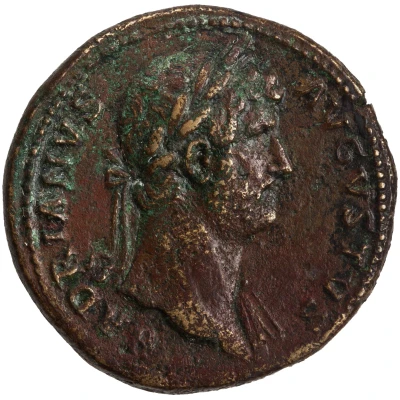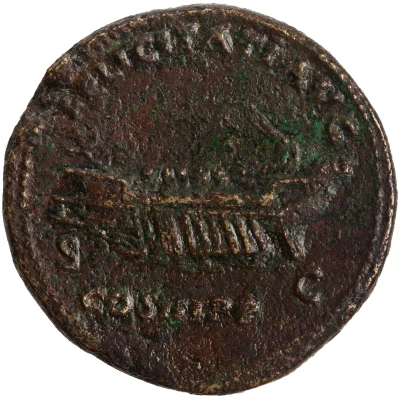


© American Numismatic Society (ANS)
Sestertius - Hadrian FELICITATI AVG COS III P P S C
| Orichalcum | 24.8 g | 33 mm |
| Issuer | Rome › Roman Empire (27 BC - 395 AD) |
|---|---|
| Emperor | Hadrian (Publius Aelius Hadrianus) (117-138) |
| Type | Standard circulation coin |
| Years | 129-130 |
| Value | 1 Sestertius = ¼ Denarius |
| Currency | Denarius, Reform of Augustus (27 BC – AD 215) |
| Composition | Orichalcum |
| Weight | 24.8 g |
| Diameter | 33 mm |
| Shape | Round (irregular) |
| Technique | Hammered |
| Demonetized | Yes |
| Updated | 2024-10-06 |
| Numista | N#255787 |
|---|---|
| Rarity index | 100% |
Reverse
Ship, left; Minerva Promachus, Triton, or Pegasus as figurehead.
Script: Latin
Lettering:
FELICITATI AVG COS III P P
S C
Translation:
Felicitati Augusti, Consul Tertium, Pater Patriae. Senatus Consultum.
To the good fortune of the emperor (Augustus), consul for the third time, father of the nation. Decree of the senate.
Comment
Mass varies: 23.83–25.77 g;Diameter varies: 32–34 mm;
Source: Online Coins of the Roman Empire (OCRE)
Interesting fact
One interesting fact about this coin is that the metal used to make it, orichalcum, is a curious blend of copper and zinc. While the exact composition of orichalcum is unknown, it is believed to have been a prized metal in ancient Rome for its durability and golden-like appearance. The use of orichalcum in the production of coins during Hadrian's reign (117-138 AD) was a significant innovation in minting technology and a testament to the Roman Empire's advanced metallurgical knowledge.